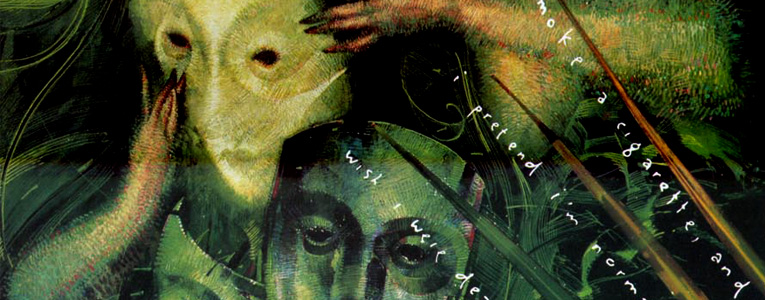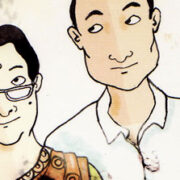I was married to The Sandman for a good three months of my life. Neil Gaiman’s postmodern fable about the mythical character who is responsible for our dreams was my morning newspaper as well as my bedtime book; it was also my lunch partner and dinner date, and the perfect accompaniment to my evening chai.
But the relationship was rocky, to say the least. There were days when I would stamp my feet and cry tears of frustration over The Sandman. The world was then a needlessly complicated place, where nothing was meant to make much sense, and where authors were deliberately and viciously out to befuddle their readers. Then there were days when the pieces of Gaiman’s elaborate puzzle would fall beautifully into place in my head and all was right with the world again. The books that I had locked away sullenly after vowing to never touch again would be back where they belonged—under my pillow, on the floor, on the kitchen table, on the shelves, inside my backpack—basically, everywhere. You can’t write a 12,000-word M.A. English literature dissertation without being bruised and battered. The trick is to choose a topic that you will enjoy getting pummelled by. I chose The Sandman.

What, after all, is pretty about dreams?
Of course, I knew I was digging my own grave. It’s one thing to read Gaiman’s ten-volume epic series for pleasure, and quite another to use it as the primary text for your Master’s dissertation. But I also knew that nothing else was going to give me that incredible adrenalin rush, if such a thing was possible by just reading a book. But we are not here to discuss my dissertation woes; we are here to applaud the mad genius that is Gaiman.
For starters, The Sandman is an intimidating piece of work. You have to be familiar with, well, just about everything in the world in order to appreciate it fully—Dante, Shakespeare, the Bible, the Arabian Nights, rock music, Freudian psychology, mythologies (not just Greek or Roman, mind you), other comic books, cultural archetypes, and even Barbie dolls for that matter. But The Sandman is far from a hodgepodge of references and allusions. It has a coherent storyline and its own set of unforgettable characters. And it has Morpheus. That tall, thin, pale-skinned, black-eyed figure you absolutely can’t help falling in love with, even though he is nothing like your ideal romantic hero. Morpheus, also known as Dream or the Sandman (amongst MANY other names) is the anthropomorphic projection of dreams. He, and his siblings—Destiny, Death, Destruction, Desire, Despair, and Delirium—constitute The Endless, a pantheon of beings who control various aspects of our existence.
The Sandman starts with the capture of Dream by an occult group headed by a magician named Roderick Burgess in the early 1900s. The first volume of the series, Preludes and Nocturnes is entirely about how Dream frees himself and undertakes a quest to regain his lost possessions. From the second volume onwards, the narrative is non-linear and chaotic. Gaiman pushes story after story, character after character, onto his grand Sandman stage, somehow managing to hold on to all the puppet strings without fumbling. Since I don’t believe in giving out plot details, I will instead give you reasons why you should read the series. The Sandman, in my head, is a banyan tree. The stories may or may not be connected. Morpheus may or may not be the central figure in every story. But he is the trunk. And that is Gaiman’s point—it is through dreams that fictions are born, and it is through fictions that we make sense of reality. And yes, eventually Morpheus dies, but the last volume of the series (The Wake), ends not with his death but with the birth of a new Dream.
Not all of it is pretty. Most of it is not pretty. What, after all, is pretty about dreams? They are just manifestations of things you don’t want out in the open, for whatever reason. And just as in dreams, there are images in The Sandman that are twisted and grotesque, and will shock you and scare you, but will still fuel your curiosity. The Sandman spills humanity’s secrets—or at least attempts to fish them out. Or that could be just me, being very obsessed with psychoanalysis.
Of course, I want to say (gush, more like) a lot more, but I will restrain myself and end with a marvellous piece of advice for you. Go. Read. The Sandman.








